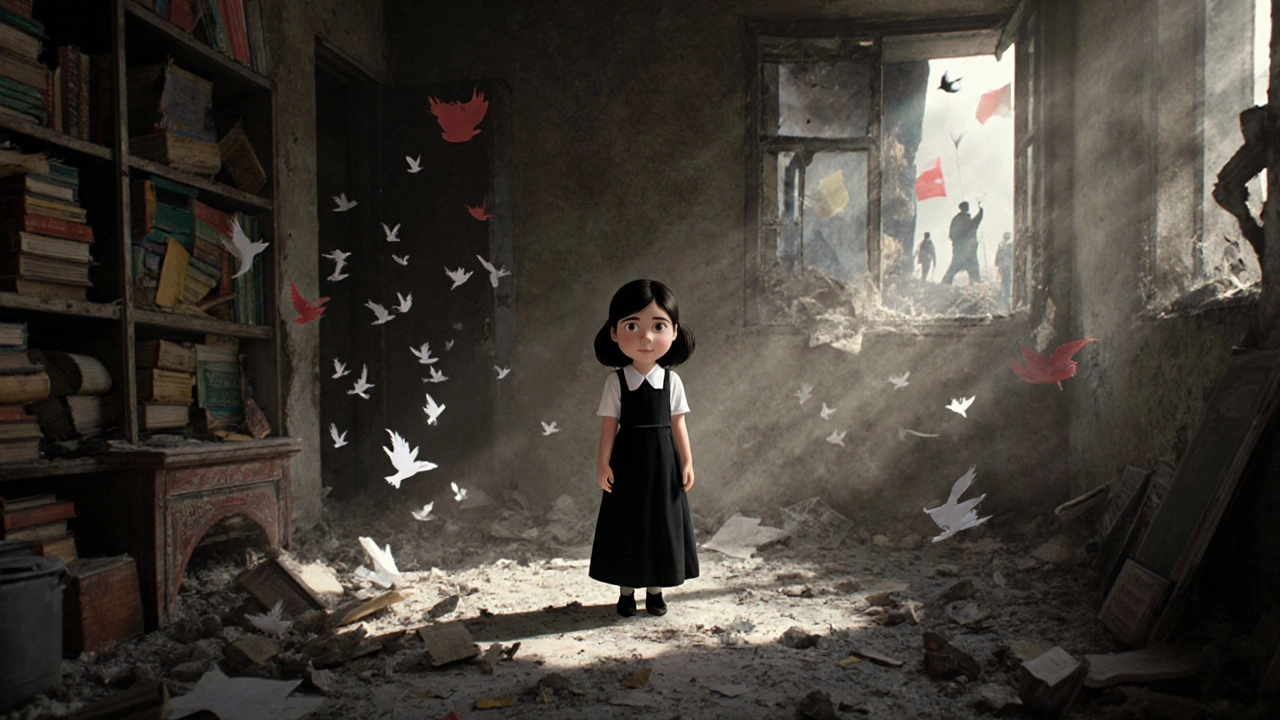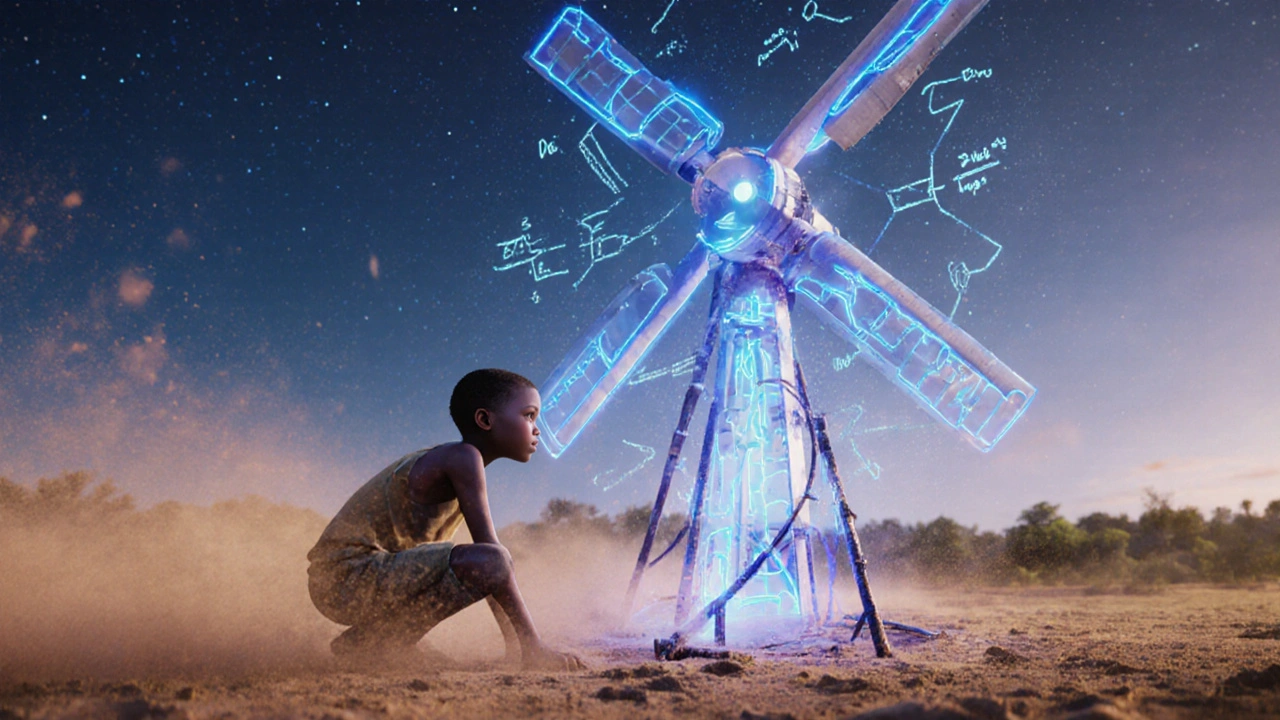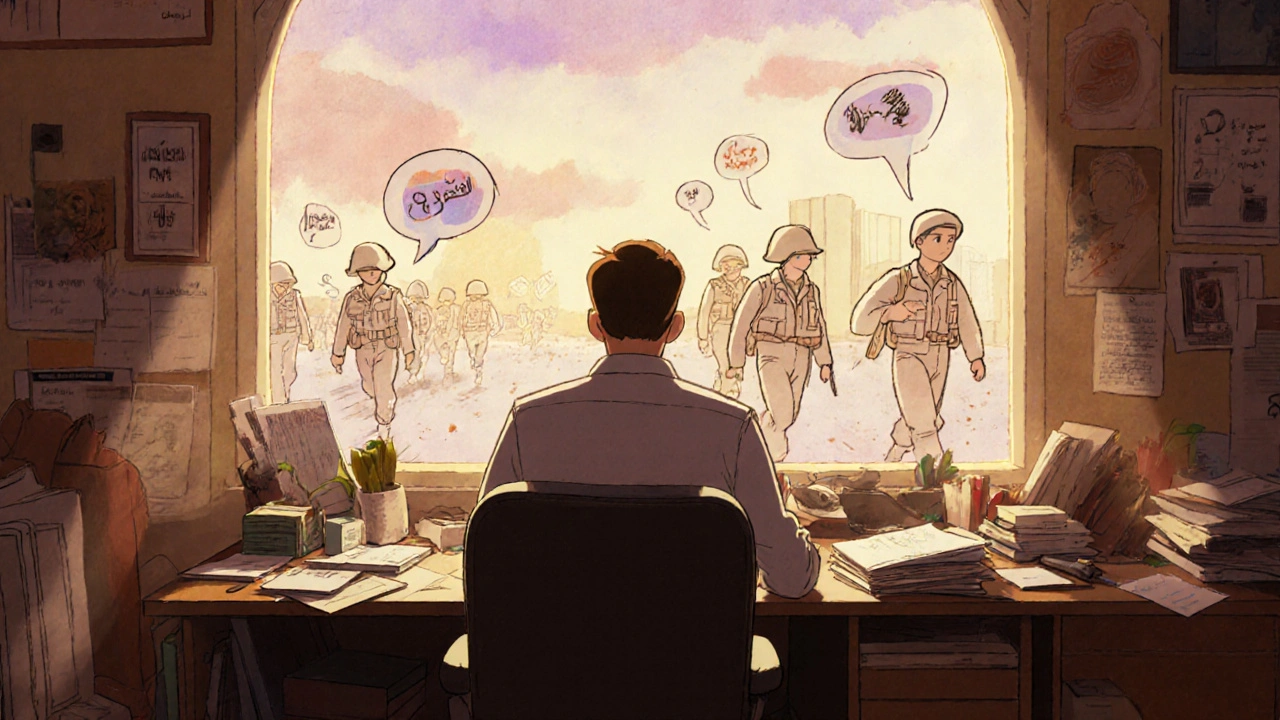Think documentaries have to be grainy footage, talking heads, and voiceovers over still photos? Think again. Animated documentaries are changing what non-fiction storytelling looks like-and they’re not just for kids. From war zones to personal trauma, from climate change to forgotten histories, animated films are now telling some of the most powerful true stories out there. And they’re doing it with drawings, paintings, and motion graphics that live-action footage simply can’t capture.
Why Animation Works for Truth
Real life isn’t always easy to film. Sometimes the subjects are too private. Sometimes the events happened decades ago. Sometimes the truth is too painful to show with real images. That’s where animation steps in. It doesn’t lie-it translates.
Take Waltz with Bashir, the 2008 Israeli film about the Sabra and Shatila massacre. Director Ari Folman couldn’t remember his own experiences as a soldier during the event. So he used animation to reconstruct memories, interviews, and nightmares. The result? A haunting, surreal journey through guilt and forgetting. Real photos would’ve been too graphic. Real actors would’ve felt staged. But hand-drawn soldiers marching through a dreamlike Beirut? That felt true.
Animation gives filmmakers control over what to show-and what to leave out. It lets them visualize internal states: anxiety, grief, confusion. In Persepolis, Marjane Satrapi used simple black-and-white cartoons to show how a young girl in Iran saw her country fall apart. The style wasn’t just aesthetic-it was emotional. The lack of color mirrored her loss of innocence. The simplicity made the horror more personal.
How It’s Made: From Sketches to Story
Animated documentaries aren’t made like cartoons. There’s no script-first approach. Instead, they start with real people, real voices, and real archives.
First, filmmakers record hours of interviews. Then they extract the emotional core: the pauses, the tone shifts, the moments when someone can’t speak. These become the rhythm of the animation. Artists don’t just draw what’s said-they draw what’s unsaid.
Take The Flat, an Israeli film about a woman who finds her late grandmother’s apartment filled with Nazi memorabilia. The filmmaker uses mixed media: old family photos, newspaper clippings, and hand-drawn reenactments. When the protagonist walks through the apartment, the walls don’t just appear-they shift, dissolve, and rebuild themselves like memories trying to hold shape.
Techniques vary. Some use rotoscoping-tracing over live footage to keep movement realistic. Others use watercolor washes to evoke mood. Some blend 2D and 3D, like in Waltz with Bashir, where real interviews sit beside animated sequences that feel like dreams. The tools aren’t the point. The point is: what does the truth look like when it can’t be filmed?
Not Just for Trauma
It’s easy to assume animated documentaries are only about war, abuse, or loss. But they’re also used for science, history, and even humor.
The Boy Who Harnessed the Wind (2019) tells the true story of a Malawian boy who built a windmill from scrap to save his village from famine. The film uses animation to explain how the windmill works-something live-action can’t easily show without diagrams. The animation doesn’t distract; it clarifies.
Science Fair (2018) uses animated sequences to visualize complex physics concepts when real footage of a student’s project wouldn’t show the underlying principles. In My Octopus Teacher, though mostly live-action, the filmmakers used subtle animation to show the octopus’s inner world-how it thinks, feels, and reacts. It wasn’t fantasy. It was empathy made visible.
Even political satire gets animated. The Dictator (2012) used stylized animation to depict real events in North Korea, avoiding censorship while keeping the truth intact. Animation here isn’t a loophole-it’s a shield.

Why Animation Feels More Honest
Here’s the paradox: animated documentaries often feel more real than live-action ones.
Why? Because they strip away the noise. No expensive cameras. No lighting setups. No actors pretending to be someone else. Just raw testimony and artistic interpretation.
Live-action documentaries can feel manipulated. A well-placed close-up, a dramatic score, a slow zoom-these can steer emotion. Animation doesn’t hide its artifice. It owns it. You know you’re watching a drawing. But you also know you’re watching a truth.
Studies in cognitive psychology show that people remember abstract concepts better when they’re visualized. Animation turns data into feeling. When a survivor says, “I felt like I was drowning,” animation can show water rising around them-not literally, but symbolically. That’s not embellishment. That’s translation.
And when real footage doesn’t exist-like the 1937 Dust Bowl, or the 1994 Rwandan genocide-animation becomes the only way to preserve memory. In Prisoners of the Sun, animators recreated the forced labor camps in Nazi-occupied Poland using survivor sketches. No photos survived. So they drew them. And now, those drawings are part of history.
The Rise of Independent Animated Docs
Until recently, animated documentaries were niche. Studios didn’t see the market. But streaming platforms changed everything.
Netflix, HBO, and Apple TV+ now commission animated docs like they’re scripted dramas. Why? Because they work. My Name Is Gulpilil (2024), a Netflix film about Aboriginal actor David Gulpilil, uses animation to show his spiritual beliefs-things no camera could capture. It won the Sundance Grand Jury Prize.
Indie filmmakers are leading the charge. With tools like Adobe After Effects, Procreate, and Blender, you don’t need a million-dollar budget. One person, a tablet, and a voice recorder can make a film that moves millions.
Look at My Father’s Eyes (2023), a 12-minute film made by a single animator in Ukraine. It tells the story of his father’s experience as a POW in Russia. The animation is rough, hand-drawn, shaky. But that’s the point. It’s not polished. It’s real. The film went viral. It was shown in classrooms. It was used in human rights hearings.

Challenges and Criticisms
It’s not all smooth sailing. Critics say animation risks distorting truth. If you can draw anything, can you make anything true?
That’s valid. But the best animated docs don’t invent-they interpret. They always cite sources. They include real audio. They credit survivors. They often show the animation process itself, like in The Act of Killing, where former death squad members reenact their crimes in movie genres. The film doesn’t hide its artifice-it uses it to expose lies.
There’s also the issue of representation. Who gets to animate someone else’s trauma? Many filmmakers now work directly with communities. In When the Mountains Tremble, indigenous Guatemalans helped design the animation to ensure cultural accuracy. Animation isn’t just a tool-it’s a collaboration.
What’s Next?
AI is starting to creep in. Some studios now use generative tools to create backgrounds or motion patterns. But the core remains human: the voice, the memory, the emotion.
The next frontier? Interactive animated documentaries. Imagine watching a film where you choose which path a survivor’s story takes-based on real interviews. Or a documentary that changes its style depending on your emotional response, tracked by facial recognition. It’s experimental. But it’s coming.
One thing’s clear: animation isn’t replacing live-action documentaries. It’s expanding them. It’s giving voice to stories that were too quiet, too painful, or too lost to be seen. And it’s doing it with pencils, pixels, and courage.
Are animated documentaries considered real documentaries?
Yes. Animated documentaries are recognized by major film festivals like Sundance, IDFA, and Cannes as legitimate non-fiction works. They follow the same ethical standards: real interviews, verified facts, and transparent sourcing. The medium is animation, but the content is documentary.
Can animated documentaries be used in education?
Absolutely. Animated documentaries simplify complex topics-like trauma, history, or science-without oversimplifying them. Schools use films like Persepolis and The Flat to teach history, ethics, and media literacy. Their visual nature helps students connect emotionally, which improves retention and understanding.
Do animated documentaries cost more to make than live-action ones?
Not necessarily. High-end animated docs can be expensive, but many are made on tiny budgets. One animator working alone with free software can produce a powerful short film for under $5,000. Live-action often requires permits, locations, crews, and insurance. Animation avoids many of those costs, making it more accessible for independent creators.
What’s the difference between an animated documentary and a documentary-style cartoon?
An animated documentary is rooted in fact and real testimony. A documentary-style cartoon might use real events as inspiration but adds fictional characters, invented dialogue, or exaggerated plots. Think of South Park’s real-event episodes versus Waltz with Bashir. One parodies. The other testifies.
Where can I watch animated documentaries?
Streaming platforms like Netflix, HBO Max, and Apple TV+ have dedicated sections. Film festivals like IDFA (Amsterdam) and Sundance feature them annually. YouTube also hosts many independent animated docs-search for titles like My Father’s Eyes or The Flat. Libraries and universities often have curated collections too.

